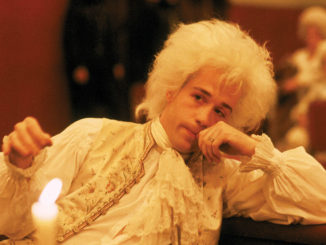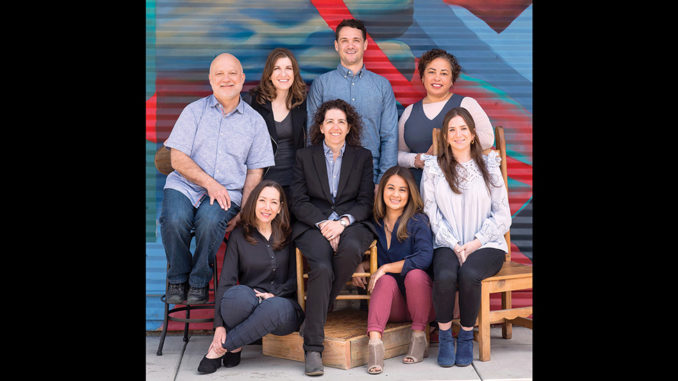
by Debra Kaufman • portraits by Martin Cohen
In 1989, five teenagers of color were arrested and accused of the rape and brutal beating of a white woman who had been jogging in Central Park. Although the DNA on the rape kit didn’t match any of the young men, they were first coerced to “confess” and convicted by juries in two separate trials in 1990. Dubbed the Central Park Five, the boys became men during their six to 13 years in prison before a convicted serial rapist confessed to the attacks in 2002.
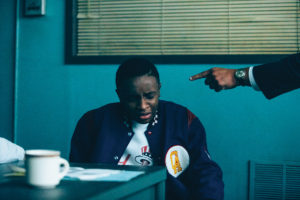
On May 31, Netflix released a four-part, limited series about this tragic story, entitled When They See Us. Written and directed by Ava DuVernay (A Wrinkle in Time, 2018; Queen Sugar, 2016-present; Selma, 2014) and shot on location in New York City by Bradford Young, ASC. Terilyn A. Shropshire, ACE, cut Part 1 with her assistant editor Mindy Elliott, while Spencer Averick, ACE, edited Parts 2 and 4 with assistant Rachel Eisenberg, and Michelle Tesoro, ACE, handled Part 3 with assistant Katherine M. Shafer. Jen Monnar was supervising music editor and Rolf Fleischmann served as visual effects editor. To a person, everyone involved in the editing of When They See Us emphasized that, although it’s called a limited series, the task was essentially to edit four feature films on a premium TV schedule. The editors prefer to refer to each of the four portions as “parts” instead of “episodes.”
Part 1
“Any time you’re telling a story based on true events and actual people, you’re going to have people who know the story — or think they know the story — and others who are coming into it fresh,” explains Shropshire, who has known DuVernay since before the latter became a filmmaker, and who served as an additional editor on the director’s A Wrinkle in Time. “When you’re editing, as a storyteller, you have to forget what you know and be the first audience to the film’s narrative. It’s important to try to bring people into the story on an emotional level and disseminate information that will be important to help them follow the arc of the characters through the next three segments. If you don’t care about the five boys in the beginning, it’ll be hard to hold viewers’ attention throughout.”

During production, DuVernay often had to shoot scenes out of order. “It was important to her to get feedback from what we were seeing — or not seeing,” the editor says. “Communication from all three of us editors was extremely important to ensure that she was getting what she needed in production.” DuVernay likes to sit and watch the cut, give notes and then go away and let the editor work, Shropshire relates, adding, “Ava is intuitive and her notes are so incredibly smart.”
With the three editors working in adjacent cutting rooms, DuVernay would move from one to the other, seeing how each part was developing. “What was great is that I also had the benefit of the perspective of the other editors,” Shropshire adds. “We would go in and look at each others’ cuts. I felt it was a very collaborative environment.” Although there are four parts to the series, “Each one had its own story and rhythm, because they’re all told in different periods of time for each boy’s journey.”
Elliott says that one major challenge in working on Part 1 was keeping up with the story structure. “The way our part was scripted, it was fashioned around flashbacks,” she explains. “So the chronology of the part was always in flux. We played around a lot with structure, exploring a lot of different variations. Just keeping track of where we’d move a single line within the sequence of events was difficult. It has a domino effect in terms of sound design as well.” (See related story on the show’s sound crew on Page 44.)
The assistant editor continues: “Ava had the artistic foresight to shoot really interesting, lyrical images that could be used throughout the part. We could pick them up anywhere as a flashback to the boys’ earlier lives. It was good to think big and inclusively about the entire series up front. Ava’s process expands out rather than narrows down. The vision becomes bigger as you’re working.”
Elliot learned a lot, again, from working with Shropshire. “She is forever trying to return to that objective state, trying to put us in the audience’s perspective, coming to it for the first time,” she says. “That was a valuable touchstone for me.”
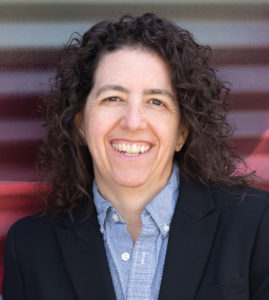
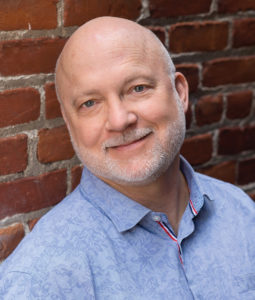
Music played an important role in the entire limited series, and music editor Monnar, who had been brought on to give a new direction to the temp track, describes its importance for Part 1. “It needed more shape, more energy, more emotion,” she recalls. “The subject matter is quite difficult and the music needed to support that.” In Part 1, we see the interrogations of the boys and their coerced confessions. “A lot of Part 1 is the boys being interviewed and threatened as the detectives fabricate a false narrative,” she explains. “The music needed to get across that these were boys, scared children, while keeping the pace going.”
Monnar says her first task is to watch the cut “in whatever stage it’s in” and talk to DuVernay and each part’s picture editor to get a feel for tone and approach. “Sometimes I’ll have a composer or score in mind,” she says. “I go from there and start putting pieces of music in to see how it works against picture.” To set the time period of 30 years ago, old-school East Coast hip-hop was chosen, she reveals. “There’s some great music in the show that had a lot to do with the storytelling.”
Shropshire reports that when she began work on Part 1, neither Monnar nor visual effects editor Fleischman had joined the production. “But once Rolf was on, he was next door, and I could go and ask for help with a comp,” the editor says, noting that effects played an important role in returning New York City streets to 1989.
Fleischmann relates that one of his tasks was to recreate the original façade of the Schomburg Towers, where one of the protagonists grew up. “It had changed in the years subsequent and had to be restored,” he explains. He also worked as a de facto one-man previsualization department and put together the occasional “Frankenstein” scene: marrying performances from different shots. Throughout the parts, 317 visual effects — almost all of them created at FuseFX, and a handful at Cadence Effects — transformed 2018 streets back to the 1980s. “Ava likes to shoot guerilla-style and tried to get a lot of coverage as quickly as possible,” he says. “We had to either obscure production elements or do period fixes. We couldn’t have a Prius driving by…”
Part 2
Averick and DuVernay have worked together for over 10 years, since her This Is the Life music documentary about the hip-hop group scene in South Los Angeles. “It was a personal documentary for Ava, and I really love it,” he says. “It was a great first project for both of us.” Once DuVernay signed on to When They See Us, “Everyone was excited and grateful that we were able to tell this story,” he stresses. “This injustice is common. Pulling back the curtain on how it happens is important for people to see and understand institutional racism.”

Part 2 focuses on the trial, which creates its own structure for the edit. “But there are a lot of perspectives we needed to keep alive: the boys, their parents, the legal teams,” he explains. “So there was always a lot of juggling. But we stayed away from making it feel like a typical courtroom drama. We also made it feel chaotic in order to feel the boys’ perspective. They didn’t understand the process and things were happening so fast for them. Bradford Young is a master at shooting people’s faces, capturing nuances that you wouldn’t normally see.”
With regard to Part 2’s temp track, Monnar reports that although she worked on all four parts, she didn’t have the time to temp all of them due to the tight schedule. “For the first pass of Part 1, I had eight days to temp 50 minutes of music, mostly starting from scratch,” she says. When she first started the project, she assembled a temp library for the show from which the editors could pull music. That came in handy when Averick and his assistant Eisenberg temped most of the second and fourth parts, using pieces of music related to what Monnar was doing in Parts 1 and 3.
Part 3
Tesoro notes that When They See Us was a “complicated, serious, heavy” story squeezed into four parts. “You’re talking about four bona fide indie movies, each with its own feel and complicated storyline,” she says. “These aren’t 43-minute TV parts. With Ava’s aesthetic, it leans towards bold, risky cuts, a documentary feeling and a lot of music.”

Part 3 focuses on the boys as they become men in prison. The editor’s connection to the project was executive producer Jonathan King, who produced Tesoro’s last feature, On the Basis of Sex (2018). “We pick up the boys while they’re incarcerated and spend some time with each one when he’s still young,” she says. “They all have a conversation with their parents, and we see scenes with their parents and other family members. My part focuses mostly on Antron McCray [Jovan Adepo] and Raymond Santana, Jr. [Freddy Miyares].”
Her part underwent some major restructuring, according to Tesoro. “Initially, there was a lot of going back and forth in time, and Ava felt she wasn’t spending enough time with each boy,” she explains, adding that up to that point, DuVernay had been focused on the first two parts of the project. “Initially, she was very hands-off,” the editor recalls. “Then I showed her an assembly, per the script. It was two hours long at that point. Ava said, ‘Okay, now I want to see your cut,’ and she challenged me to take out 20 minutes on my own and to experiment with restructuring and truncating groups of scenes together to make one ‘stew.’ She said, ‘We always have this other cut to go back to.’ She’s not afraid to see something else she hadn’t thought of — which is very freeing for an editor.”
DuVernay and Tesoro restructured the third part so that, in the beginning, we see each boy transition into manhood, instead of seeing all the characters when they were boys at once, then seeing them all as men in the second half. For example, one of the boys and his mother are talking about studying and his worry about what going home will be like. And in the next scene, we see him at home as an adult.
“There’s a common denominator across the two scenes,” explains Tesoro. Because Part 3 had been shot for a previous structure, they had to find the right footage to create those boyhood-to-manhood transitions. “We benefited from a lot of coverage,” she adds. “Ava was always pushing the cameras to get what Teri calls ‘texture,’ and I was able to use it in interesting ways. One shot I use as a transition that I otherwise never would have used was a shot that rack-focuses between leaves on trees and barbed wire outside the prison. It transitions us from incarceration to freedom.”
On the editor’s first two passes, DuVernay gave her “general restructure ideas and some specific notes,” notes Tesoro. “But I was pretty much able to have control and work on my own with the cut, trying to shape it.” As the two structured the part in a way that connected the audience to the boys, the editor was also able to learn from the director more about how the other parts were developing. “Ava knew what she might need from the part as a whole, and how that fit in with the other parts,” she explains.

Assistant editor Shafer met Tesoro when she was brought on as an apprentice and bumped up to second assistant for On the Basis of Sex. “In this project, I threw her in the ocean, but she had a really good attitude about jumping in and has the energy of someone just starting out,” says the editor. “Michelle is intense in a great way,” notes Shafer. “She’s very demanding of herself; she’s very fast and likes things really organized.
“I love to organize, so we complement each other,” the assistant continues. “She likes her bins organized, and I could do that all day long. She demanded a lot of me, knowing that I’m new, but let me rise to the occasion and learn a lot along the way.” Shafer also worked “tirelessly” on temp sound effects. “I’m a big believer that sound and picture are equally important,” she maintains, adding that one of the difficulties of working on Part 3 was that the characters’ storylines are split. “They’re all in different locations, doing different things. We had to find a way to keep them connected and have them flow; bridging those scenes was a challenge.”
Monnar created the temp track for most of Part 3. “Although I didn’t personally cut the temp everywhere, the editors had pieces of music related to what I was doing in Parts 1 and 3, so we could have consistency with the themes that were chosen.”
Part 4
Averick says that, from the beginning, DuVernay wanted him to work on the final portion, which, he says, is a standalone story that doesn’t connect chronologically with the others. The fourth part focuses on the fate of Korey Wise (Jharrell Jerome), who immediately went to an adult prison after being arrested because he was 16. “He had a completely different experience than the other boys,” notes the editor. “The fact that the part is solely about Korey, and nobody else, was the main hurdle for us. To step inside of his completely unique and terrifying experience, as much as possible, was very important.”
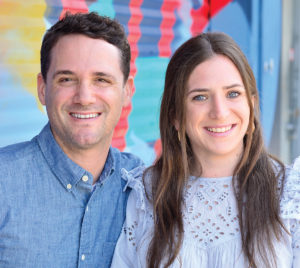
Noting that the character moves from prison to prison, the editor adds, “The system came down on him with full force; he had no chance, and no help from people on the outside. We wanted the audience to understand the pain he went through.” Although Averick and DuVernay are both “big cinephiles,” he says, they did not reference any other films in their approach to Part 4. “It comes down to emotion,” he says. “That was our priority. We always talk first about how scenes feel.”
Working as part of a team with two other editors was a new experience for Averick. “It’s always been just Ava and me,” he relates. “I wasn’t sure how it would go, but it was a wonderful experience bouncing ideas off the other editors, showing early cuts of scenes, sharing feedback and ideas… It was rewarding and necessary. It’s valuable to have an editing team, and I’d love to continue to work this way in the future.”
Assistant Eisenberg worked with Averick for the first time on When They See Us. “We’re a great pair,” she says, relating that, among her tasks, she prepared dailies and did all the temp sound effects. “My focus was to make his job as easy as possible,” she says. “Every time he had a request, I would fulfill it immediately so he was never waiting on me and we could just keep trucking along. There was a ton of footage and that’s always difficult.
“Sometimes Spencer and I would have long sidebar conversations about how tough the material was,” she continues. “But we realized that, despite being so tough for us to watch and work with, it was actually more meaningful because we were presenting the truth about these five men’s stories, which immediately made us feel better and excited.”
Part 4’s final shot was also the most challenging visual effect in the entire series. “The ending scene was at a restaurant the boys had frequented, but the night before we were to shoot, the façade collapsed and the city put scaffolding all over it,” says Fleischmann, who reports that the effects crew had to digitally remove the rigging. The crane shot also travelled over the restaurant, which meant that lens distortion changed the geometry of the building. “It’s a great deal of calculation on the part of the computer and the artists to make sure the camera lens distortions look plausible,” he says. The crane then moves to Central Park, where the visual effects team had to create a lake, as well as composite people. “It was the final shot in the movie, and Central Park had to be placid and peaceful,” says Fleischmann. “Ava wanted to connote that the world had been set right again.”
Conclusion
Every member of the editorial team agreed that the tight schedule was the show’s biggest hurdle. But they all relished their roles in working on an important and resonant project.
“This was a tremendous story of a time in our lives when these five men went through this extraordinary journey,” explains Shropshire. “I feel an immense responsibility and honor to be part of the team to tell their story in a narrative fashion, to tell it in such a way that it’s meaningful to the people who are going to see it.”




